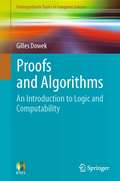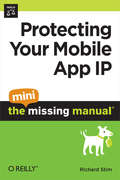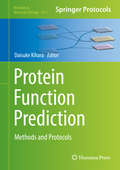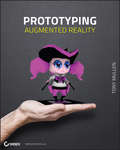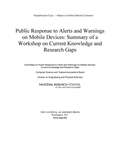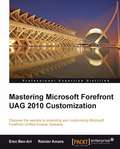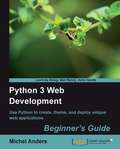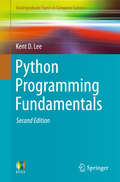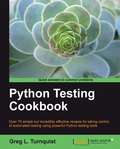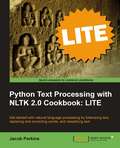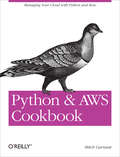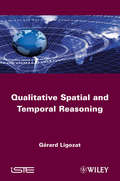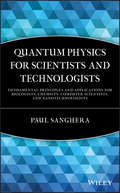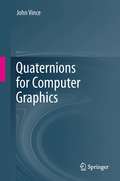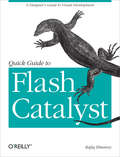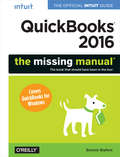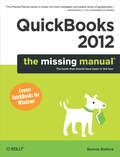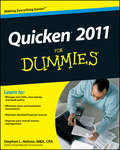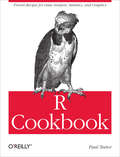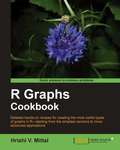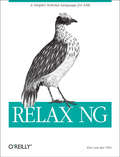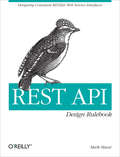- Table View
- List View
Proofs and Algorithms
by Gilles DowekLogic is a branch of philosophy, mathematics and computer science. It studies the required methods to determine whether a statement is true, such as reasoning and computation. Proofs and Algorithms: Introduction to Logic and Computability is an introduction to the fundamental concepts of contemporary logic - those of a proof, a computable function, a model and a set. It presents a series of results, both positive and negative, - Church's undecidability theorem, Gödel's incompleteness theorem, the theorem asserting the semi-decidability of provability - that have profoundly changed our vision of reasoning, computation, and finally truth itself. Designed for undergraduate students, this book presents all that philosophers, mathematicians and computer scientists should know about logic.
Propagation Engineering in Radio Links Design
by Farshid Ghasemi Abdollah Ghasemi Ali AbediThis book addresses propagation phenomena in satellite, radar, broadcasting, short range , trans-horizon and several recent modes of communications in radio links. Also, it includes some topics on antennas , radio noises and improvement techniques. The book provides the necessary basic matters, as well as experimental results and calculation procedures for radio link design.
Protecting Your Mobile App IP: The Mini Missing Manual
by Richard StimLearn four cost-effective ways to protect the applications you develop for mobile devices. The methods described in this Mini Missing Manual won't stop people from misappropriating your secrets, stealing your name, and copying your code. But if any of those things do happen, you'll have the legal ammunition you need to recover your losses and, in some cases, get money to pay attorney fees. Taking these steps will also reinforce your legal rights in the event that another company wants to acquire your apps.The four methods include:Trade secret protection. Want to show your app to others -- investors, beta testers, or contractors -- before it's available to the public? Learn what trade secrets are and how you can protect them.Copyright protection. Protect your whole app as well as its individual parts, such as the underlying code, appearance, and the collection of data within it.Trademark protection. Protect your app's name, slogan, or logo. And learn how to file an application for trademark registration.Permissions. Learn how and when to get permission to reuse material from other sources, like photos, data, video, or audio clips.
Protein Function Prediction
by Daisuke KiharaGene function annotation has been a central question in molecular biology. The importance of computational function prediction is increasing because more and more large scale biological data, including genome sequences, protein structures, protein-protein interaction data, microarray expression data, and mass spectrometry data, are awaiting biological interpretation. Traditionally when a genome is sequenced, function annotation of genes is done by homology search methods, such as BLAST or FASTA. However, since these methods are developed before the genomics era, conventional use of them is not necessarily most suitable for analyzing a large scale data. Therefore we observe emerging development of computational gene function prediction methods, which are targeted to analyze large scale data, and also those which use such omics data as additional source of function prediction. In this book, we overview this emerging exciting field. The authors have been selected from 1) those who develop novel purely computational methods 2) those who develop function prediction methods which use omics data 3) those who maintain and update data base of function annotation of particular model organisms (E. coli), which are frequently referred
Prototyping Augmented Reality
by Tony MullenLearn to create augmented reality apps using Processing open-source programming language Augmented reality (AR) is used all over, and you may not even realize it. Smartphones overlay data onto live camera views to show homes for sale, restaurants, or historical sites. American football broadcasts use AR to show the invisible first-down line on the field to TV viewers. Nike and Budweiser, among others, have used AR in ads. Now, you can learn to create AR prototypes using 3D data, Processing open-source programming language, and other languages. This unique book is an easy-to-follow guide on how to do it. Guides you through the emerging technology of Augmented Reality (AR) Shows you how to use 3D data with the Processing programming environment and other languages to create AR prototypes for the web, smartphones, Macs, and PCs Helps 3D artists and designers who want to move into the AR market but don't have programming skills Covers the essentials of 3D programming, creating objects for an AR library, building and exporting 3D models, and much more Explains how to interactively link 3D to physical, virtual, and streaming environments Author Tony Mullen is both an artist and a programmer and perfectly suited to explain how to bridge these two worlds, as he so deftly does in Prototyping with Augmented Reality.
Public Response to Alerts and Warnings on Mobile Devices: Summary of a Workshop on Current Knowledge and Research Gaps
by National Research Council of the National AcademiesThis book presents a summary of the Workshop on Public Response to Alerts and Warnings on Mobile Devices: Current Knowledge and Research Gaps, held April 13 and 14, 2010, in Washington, D.C., under the auspices of the National Research Council's Committee on Public Response to Alerts and Warnings on Mobile Devices: Current Knowledge and Research Needs. The workshop was structured to gather inputs and insights from social science researchers, technologists, emergency management professionals, and other experts knowledgeable about how the public responds to alerts and warnings, focusing specifically on how the public responds to mobile alerting.
Puppet 2.7 Cookbook
by John ArundelThis book is written in a Cookbook style showing you how to set up and expand your Puppet infrastructure. It progresses through detailed information on the language and features, external tools, reporting, monitoring, and troubleshooting, and concludes with many specific recipes for managing popular applications. The book assumes that the reader already has a working Puppet installation and perhaps has written some basic manifests or adapted some published modules. It also requires some experience of Linux systems administration, including familiarity with the command line, file system, and text editing. No programming experience is required.
Python 3 Web Development Beginner's Guide
by Michel AndersPart of Packt's Beginner's Guide Series, this book follows a sample application, with lots of screenshots, to help you get to grips with the techniques as quickly as possible. Moderately experienced Python programmers who want to learn how to create fairly complex, database-driven, cross browser compatible web apps that are maintainable and look good will find this book of most use. All key technologies except for Python 3 are explained in detail.
Python Programming Fundamentals (Undergraduate Topics in Computer Science)
by Kent D. LeeComputer programming is a skill that can bring great enjoyment from the creativity involved in designing and implementing a solution to a problem. This classroom-tested and easy-to-follow textbook teaches the reader how to program using Python, an accessible language which can be learned incrementally. Through an extensive use of examples and practical exercises, students will learn to recognize and apply abstract patterns in programming, as well as how to inspect the state of a program using a debugger tool. Features: contains numerous examples and solved practice exercises designed for an interactive classroom environment; highlights several patterns which commonly appear in programs, and presents exercises that reinforce recognition and application of these patterns; introduces the use of a debugger, and includes supporting material that reveals how programs work; presents the Tkinter framework for building graphical user interface applications and event-driven programs; provides helpful additional resources for instructors at the associated website: http://cs.luther.edu/~leekent/CS1. This hands-on textbook for active learning in the classroom will enable undergraduates in computer science to develop the necessary skills to begin developing their own programs. It employs Python as the introductory language due to the wealth of support available for programmers.
Python Testing Cookbook
by Greg L. TurnquistThis cookbook is written as a collection of code recipes containing step-by-step directions on how to install or build different types of Python test tools to solve different problems. Each recipe contains explanations of how it works along with answers to common questions and cross references to other relevant recipes. The easy-to-understand recipe names make this a handy test reference book. Python developers and programmers with a basic understanding of Python and Python testing will find this cookbook beneficial. It will build on that basic knowledge equipping you with the intermediate and advanced skills required to fully utilize the Python testing tools. Broken up into lots of small code recipes, you can read this book at your own pace, whatever your experience. No prior experience of automated testing is required.
Python Text Processing with NLTK 2.0 Cookbook: LITE
by Jacob PerkinsThe learn-by-doing approach of this book will enable you to dive right into the heart of text processing from the very first page. Each recipe is carefully designed to fulfill your appetite for Natural Language Processing. Packed with numerous illustrative examples and code samples, it will make the task of using the NLTK for Natural Language Processing easy and straightforward. This book is for Python programmers who want to quickly get to grips with using the NLTK for Natural Language Processing. Familiarity with basic text processing concepts is required. Programmers experienced in the NLTK will also find it useful. Students of linguistics will find it invaluable.
Python and AWS Cookbook
by Mitch GarnaatIf you intend to use Amazon Web Services (AWS) for remote computing and storage, Python is an ideal programming language for developing applications and controlling your cloud-based infrastructure. This cookbook gets you started with more than two dozen recipes for using Python with AWS, based on the author's boto library. You'll find detailed recipes for working with the S3 storage service as well as EC2, the service that lets you design and build cloud applications. Each recipe includes a code solution you can use immediately, along with a discussion of why and how the recipe works. You also get detailed advice for using boto with AWS and other cloud services. This book's recipes include methods to help you: Launch instances on EC2, and keep track of them with tags Associate an Elastic IP address with an instance Restore a failed Elastic Block Store volume from a snapshot Store and monitor your own custom metrics in CloudWatch Create a bucket in S3 to contain your data objects Reduce the cost of storing noncritical data Prevent accidental deletion of data in S3
Python and AWS Cookbook: Managing Your Cloud with Python and Boto
by Mitch GarnaatIf you intend to use Amazon Web Services (AWS) for remote computing and storage, Python is an ideal programming language for developing applications and controlling your cloud-based infrastructure. This cookbook gets you started with more than two dozen recipes for using Python with AWS, based on the author’s boto library.You’ll find detailed recipes for working with the S3 storage service as well as EC2, the service that lets you design and build cloud applications. Each recipe includes a code solution you can use immediately, along with a discussion of why and how the recipe works. You also get detailed advice for using boto with AWS and other cloud services.This book’s recipes include methods to help you:Launch instances on EC2, and keep track of them with tagsAssociate an Elastic IP address with an instanceRestore a failed Elastic Block Store volume from a snapshotStore and monitor your own custom metrics in CloudWatchCreate a bucket in S3 to contain your data objectsReduce the cost of storing noncritical dataPrevent accidental deletion of data in S3
Qualitative Spatial and Temporal Reasoning
by Gérard LigozatStarting with an updated description of Allen's calculus, the book proceeds with a description of the main qualitative calculi which have been developed over the last two decades. It describes the connection of complexity issues to geometric properties. Models of the formalisms are described using the algebraic notion of weak representations of the associated algebras. The book also includes a presentation of fuzzy extensions of qualitative calculi, and a description of the study of complexity in terms of clones of operations.
Quantum Physics for Scientists and Technologists
by Paul SangheraQuantum Physics for Scientists and Technologists is a self-contained, comprehensive review of this complex branch of science. The book demystifies difficult concepts and views the subject through non-physics fields such as computer science, biology, chemistry, and nanotechnology. It explains key concepts and phenomena in the language of non-physics majors and with simple math, assuming no prior knowledge of the topic.This cohesive book begins with the wavefunction to develop the basic principles of quantum mechanics such as the uncertainty principle and wave-particle duality. Comprehensive coverage of quantum theory is presented, supported by experimental results and explained through applications and examples without the use of abstract and complex mathematical tools or formalisms. From there, the book:Takes the mystery out of the Schrodinger equation, the fundamental equation of quantum physics, by applying it to atomsShows how quantum mechanics explains the periodic table of elementsIntroduces the quantum mechanical concept of spin and spin quantum number, along with Pauli's Exclusion Principle regarding the occupation of quantum statesAddresses quantum states of molecules in terms of rotation and vibration of diatomic moleculesExplores the interface between classical statistical mechanics and quantum statistical mechanicsDiscusses quantum mechanics as a common thread through different fields of nanoscience and nanotechnologyEach chapter features real-world applications of one or more quantum mechanics principles. "Study Checkpoints" and problems with solutions are presented throughout to make difficult concepts easy to understand. In addition, pictures, tables, and diagrams with full explanations are used to present data and further explain difficult concepts.This book is designed as a complete course in quantum mechanics for senior undergraduates and first-year graduate students in non-physics majors. It also applies to courses such as modern physics, physical chemistry and nanotechnology. The material is also accessible to scientists, engineers, and technologists working in the fields of computer science, biology, chemistry, engineering, and nanotechnology.
Quaternions for Computer Graphics
by John VinceSir William Rowan Hamilton was a genius, and will be remembered for his significant contributions to physics and mathematics. The Hamiltonian, which is used in quantum physics to describe the total energy of a system, would have been a major achievement for anyone, but Hamilton also invented quaternions, which paved the way for modern vector analysis. Quaternions are one of the most documented inventions in the history of mathematics, and this book is about their invention, and how they are used to rotate vectors about an arbitrary axis. Apart from introducing the reader to the features of quaternions and their associated algebra, the book provides valuable historical facts that bring the subject alive. Quaternions for Computer Graphics introduces the reader to quaternion algebra by describing concepts of sets, groups, fields and rings. It also includes chapters on imaginary quantities, complex numbers and the complex plane, which are essential to understanding quaternions. The book contains many illustrations and worked examples, which make it essential reading for students, academics, researchers and professional practitioners.
Quick Guide to Flash Catalyst: A Designer's Guide to Visual Development
by Rafiq ElmansyHow do you transform user interface designs created in Photoshop or Illustrator into interactive web pages? It's easier than you think. This guide shows you how to use Adobe Flash Catalyst to create interactive UIs and website wireframes for Rich Internet Applications—without writing a single line of code.Ideal for web designers, this book introduces Flash Catalyst basics with detailed step-by-step instructions and screenshots that illustrate every part of the process. You'll learn hands-on how to turn your static design or artwork into working user interfaces that can be implemented in Flash Builder or Adobe AIR.Get an overview of Flash Catalyst’s interactive componentsImport files from Photoshop, Illustrator, or FireworksConvert your artwork into interactive components and apply specific actionsCreate animated transitions between the web pages in your projectTest interactive components and transitions while you workGet optimization tips to help you create fast-loading applicationsExport projects to the SWF format for web use, or to Adobe AIR for desktop applications
QuickBooks 2012: The Missing Manual
by Bonnie BiaforeYour bookkeeping workflow will be smoother and faster with QuickBooks 2012 for Windows--but only if you spend more time using the program than figuring out how it works. This book puts you in control: you get step-by-step instructions on how and when to use specific features, along with basic accounting advice to guide you through the learning process. The important stuff you need to know: Get started. Set up your accounts, customers, jobs, and invoice items quickly. Manage your business. Track spending, income, invoices, inventory, and payroll. Spend less time on bookkeeping. Use QuickBooks to create invoices or timesheets in batches. Follow the money. Examine everything from billable time and expenses to year-end tasks. Find key info quickly. Rely on QuickBooks' vendor, customer, inventory, and employee centers. Exchange data with other programs. Move data between QuickBooks and Microsoft Office.
QuickBooks 2012: The Missing Manual
by Bonnie BiaforeYour bookkeeping workflow will be smoother and faster with QuickBooks 2012 for Windows—but only if you spend more time using the program than figuring out how it works. This book puts you in control: you get step-by-step instructions on how and when to use specific features, along with basic accounting advice to guide you through the learning process.The important stuff you need to know:Get started. Set up your accounts, customers, jobs, and invoice items quickly.Manage your business. Track spending, income, invoices, inventory, and payroll.Spend less time on bookkeeping. Use QuickBooks to create invoices or timesheets in batches.Follow the money. Examine everything from billable time and expenses to year-end tasks.Find key info quickly. Rely on QuickBooks’ vendor, customer, inventory, and employee centers.Exchange data with other programs. Move data between QuickBooks and Microsoft Office.
Quicken 2011 For Dummies
by Stephen L. NelsonThe classic guide to the leading personal finance software—completely updated! As the number one personal finance software on the market, Quicken empowers you to take control of your personal finances quickly and effortlessly. Providing you with a thorough update of all the latest features and enhancements to the new release of Quicken 2011, Stephen Nelson shows you how to track your day-to-day finances, better manage your investments, evaluate the tax implications of your financial decisions, and much more. Veteran author Stephen Nelson provides a thorough update to his classic bestseller on the number one personal financial management planning program Shows you how to track your day-to-day finances, better manage your investments, boost your personal savings, be more responsible with your spending, tackle debt, and more Presents a fun and friendly approach to a topic that many people find intimidating or overwhelming and quickly and easily helps you take control of your personal finances Whether you're a first-time Quicken customer or looking to take advantage of the updates the latest release has to offer, Quicken 2011 For Dummies offers a straightforward-but-fun approach to this popular personal finance software.
R Cookbook: Proven Recipes for Data Analysis, Statistics, and Graphics (Cookbook Ser.)
by Paul TeetorWith more than 200 practical recipes, this book helps you perform data analysis with R quickly and efficiently. The R language provides everything you need to do statistical work, but its structure can be difficult to master. This collection of concise, task-oriented recipes makes you productive with R immediately, with solutions ranging from basic tasks to input and output, general statistics, graphics, and linear regression. Each recipe addresses a specific problem, with a discussion that explains the solution and offers insight into how it works. If you're a beginner, R Cookbook will help get you started. If you're an experienced data programmer, it will jog your memory and expand your horizons. You'll get the job done faster and learn more about R in the process. Create vectors, handle variables, and perform other basic functions Input and output data Tackle data structures such as matrices, lists, factors, and data frames Work with probability, probability distributions, and random variables Calculate statistics and confidence intervals, and perform statistical tests Create a variety of graphic displays Build statistical models with linear regressions and analysis of variance (ANOVA) Explore advanced statistical techniques, such as finding clusters in your data "Wonderfully readable, R Cookbook serves not only as a solutions manual of sorts, but as a truly enjoyable way to explore the R language--one practical example at a time." --Jeffrey Ryan, software consultant and R package author
R Graph Cookbook
by Hrishi V. MittalThis hands-on guide cuts short the preamble and gets straight to the point - actually creating graphs, instead of just theoretical learning. Each recipe is specifically tailored to fulfill your appetite for visually representing you data in the best way possible. This book is for readers already familiar with the basics of R who want to learn the best techniques and code to create graphics in R in the best way possible. It will also serve as an invaluable reference book for expert R users.
RELAX NG: A Simpler Schema Language for XML
by Eric van der VlistAs developers know, the beauty of XML is that it is extensible, even to the point that you can invent new elements and attributes as you write XML documents. Then, however, you need to define your changes so that applications will be able to make sense of them and this is where XML schema languages come into play. RELAX NG (pronounced relaxing), the Regular Language Description for XML Core--New Generation is quickly gaining momentum as an alternative to other schema languages. Designed to solve a variety of common problems raised in the creation and sharing of XML vocabularies, RELAX NG is less complex than The W3C's XML Schema Recommendation and much more powerful and flexible than DTDs.RELAX NG is a grammar-based schema language that's both easy to learn for schema creators and easy to implement for software developers In RELAX NG, developers are introduced to this unique language and will learn a no-nonsense method for creating XML schemas. This book offers a clear-cut explanation of RELAX NG that enables intermediate and advanced XML developers to focus on XML document structures and content rather than battle the intricacies of yet another convoluted standard.RELAX NG covers the following topics in depth:Introduction to RELAX NGBuilding RELAX NG schemas using XML syntaxBuilding RELAX NG schemas using compact syntax, an alternative non-XML syntaxFlattening schemas to limit depth and provide reusabilityUsing external datatype libraries with RELAX NGW3C XML Schema regular expressionsWriting extensible schemasAnnotating schemasGenerating schemas form different sourcesDeterminism and datatype assignmentand much more.If you're looking for a schema language that's easy to use and won't leave you in a labyrinth of obscure limitations, RELAX NG is the language you should be using. And only O'Reilly's RELAX NG gives you the straightforward information and everything else you'll need to take advantage of this powerful and intelligible language.
REST API Design Rulebook
by Mark MasseIn today's market, where rival web services compete for attention, a well-designed REST API is a must-have feature. This concise book presents a set of API design rules, drawn primarily from best practices that stick close to the Web's REST architectural style. Along with rules for URI design and HTTP use, you'll learn guidelines for media types and representational forms. REST APIs are ubiquitous, but few of them follow a consistent design methodology. Using these simple rules, you will design web service APIs that adhere to recognized web standards. To assist you, author Mark Massé introduces the Web Resource Modeling Language (WRML), a conceptual framework he created for the design and implementation of REST APIs. Learn design rules for addressing resources with URIs Apply design principles to HTTP's request methods and response status codes Work with guidelines for conveying metadata through HTTP headers and media types Get design tips to address the needs of client programs, including the special needs of browser-based JavaScript clients Understand why REST APIs should be designed and configured, not coded
REST API Design Rulebook: Designing Consistent RESTful Web Service Interfaces
by Mark MasseIn todayâ??s market, where rival web services compete for attention, a well-designed REST API is a must-have feature. This concise book presents a set of API design rules, drawn primarily from best practices that stick close to the Webâ??s REST architectural style. Along with rules for URI design and HTTP use, youâ??ll learn guidelines for media types and representational forms.REST APIs are ubiquitous, but few of them follow a consistent design methodology. Using these simple rules, you will design web service APIs that adhere to recognized web standards. To assist you, author Mark Massé introduces the Web Resource Modeling Language (WRML), a conceptual framework he created for the design and implementation of REST APIs.Learn design rules for addressing resources with URIsApply design principles to HTTPâ??s request methods and response status codesWork with guidelines for conveying metadata through HTTP headers and media typesGet design tips to address the needs of client programs, including the special needs of browser-based JavaScript clientsUnderstand why REST APIs should be designed and configured, not coded
